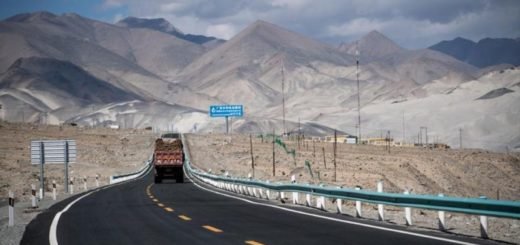Indian Freedom Movement in South-East Asia & exploits of Indian National Army
It was a very common sight to see a picture of Netaji hanging with Gods in the homes of Indians in South East Asia. It was said that while searching the houses if Japanese soldiers would see pictures of Netaji, they salute the picture & leave the house without harming anyone. –Achal gautam*
Netaji Subhas Chandra Bose was perhaps the most popular, dynamic & mythical leader of Indian Independence Movement. He achieved something unbelievable & unimaginable during British Raj- He built an Indian Army (Indian National Army – INA) to fight for freedom of India against British. Even though Indian POWs formed the backbone of INA, the Army drew its power from Indians living in South East Asia. Around 3 million Indians (mostly Tamils and some Malayalam speaking) gave the ultimate sacrifice for Indian Independence.

Indian National Army | Image Credit: Netaji Research Bureau
Hundreds of thousands of Tamil Speaking Indians from Madras Province were sent to South East Asia (the Malay Peninsula, Singapore etc.) as farm labourers by British. Most of them were underpaid and denied even basic rights. In Burma, Indians had migrated from almost all provinces (Bengal, Bombay, Rajputana, Madras etc.). of India. When Japan conquered South East, the life turned upside down for these migrant Indians. Around the same time, Netaji arrived in South East Asia to take control of Indian National Army. Soon, he became the most popular leader among Indians. Also, he received warm and respectable hospitality from the South-East Asian masses. A Malaysian freedom movement leader Ahmad Sani was so impressed with Netaji that he changed his name to Ahmad Boestaman.
The Japanese victory over Russia in 1905 and their subsequent war victories in the beginning of 2nd world war had given hopes to migrant Indians that ” Gora ” (White People) can be defeated in war.
Even though they had no illusion of Japanese aristocracy but they had a believe that Netaji will not sell our country to the Japanese. Before 2nd world war, Netaji was perhaps as popular than Gandhi and he was the main threat for British in India. A CIA report on 1945 says Netaji was the most energetic and persuasive leader of India. In Netaji, migrant Indians of South East Asia saw a hope to free their homeland India. These Indians donated huge amounts of money to Netaji. Even thousands of ladies donated all their jewellery (including sacred Mangalsurta) for the freedom of India.
It was a very common sight to see a picture of Netaji hanging with Gods in the homes of Indians in South East Asia. It was said that while searching the houses if Japanese soldiers would see pictures of Netaji, they salute the picture & leave the house without harming anyone. Though Indians in South East Asia were divided on the basis of religion, caste, language etc., but all were united under the divine leadership of Netaji Bose. He was not only a saviour for these Indians but a hope to these people to free their motherland. It may seem sarcastic today that how a tiny force of 40000 with Japanese could defeat Allied forces in India. But in 1943-44, It was close to reality. British were on the run in Asia and Japan was still ruling waves and it was expected that India might fall. But 2.5 million strong British Raj forces (mostly Indian) defeated INA and Japanese forces.
INA drew its men mostly from Indian POWs who had surrendered to Japan in Singapore, Malaysia, Burma. but local Indian volunteers also played a key role. Local recruits helped Indian National Army to swell to 3 divisions. Even females joined INA where a special ladies regiment was formed named ” Rani of Jhansi Regiment “. Young volunteers used to fake their age to join the INA. Netaji was overwhelmed by the support which he received in South East Asia from Indians living there. Everyone from Netaji to a common soldier of INA worked hard and sacrificed everything they had but they lost. And when the end came, there were no regrets from anyone. They had sacrificed everything for their motherland. many of these soldiers & supporters of INA had to pay the price after British won the war. After the Japanese surrender, Netaji addressed a large gathering in Singapore & said: ” even if the three million Indians in East Asia should perish to the last man, the sacrifice was nothing as compared to the freedom of crores of our sisters and brothers at home for many many years to come”.
Netaji was totally right. The legends of military exploit of INA might have played an important role in the early independence of India. The main pillar of British rule of India was the Native Army. Whether it was battle of Plassey or Battle of Buxar or Anglo-Maratha war or Anglo Sikh war, it was the native Indian Army which played the most important role for British. There was a concept of ” loyalty to Namak ” and local Indians has served in the military of its rulers irrespective of the fact that the ruler was British or Mughal or some native kings. The INA broke this very important pillar. Thousands of soldiers that had taken an oath for British King fought against British forces. Finally, the love for motherland overcame the oath of a foreign king. Majority of Indian soldiers remained loyal to British but the breach of discipline of Indian Army was a very important signal. Later sailors of Indian navy mutinied in 1946 and it signalled British for a constant fear of mutiny from the native Indians in their army. After this, the days of British Raj was numbered.

Indian Prime Minister Narendra Modi visiting INA memorial dedicated to the “Unknown Warrior” of the Indian National Army (INA) in July 1945. | Image: Narendramodi.in
It was a total miracle that an Indian army was formed 3000 KMs from India with help of Indian POWs and migrant Indian population and it fought bravely with whatever resources it had. This was perhaps the most defining movement towards the Indian history in the 20th century. An Indian Army was fighting for India for the first time after the 1st war of Independence (1857). Though Independent India disappointed these brave soldiers. It is believed that Mountbatten persuaded Pandit Nehru not to take these INA soldiers backs in Indian Army. Those soldiers that fought for their beloved motherland India were neither reinstated in Army nor given the retirement benefits like the pension.
Even we have forgotten the sacrifice from the Indian community of South East Asia. This was one of the finest hours of Indian freedom movement and sadly very few people are aware of this aspect of history. Even after 70 years of Independence, we have failed to solve the mystery of the death of Netaji. He might or might not have died in that plane crash but he is alive in our hearts. We are grateful to Netaji, brave soldiers of INA and Indians of South East Asia.
Also, read Strategic importance of wheat shipment to Afghanistan by India



















